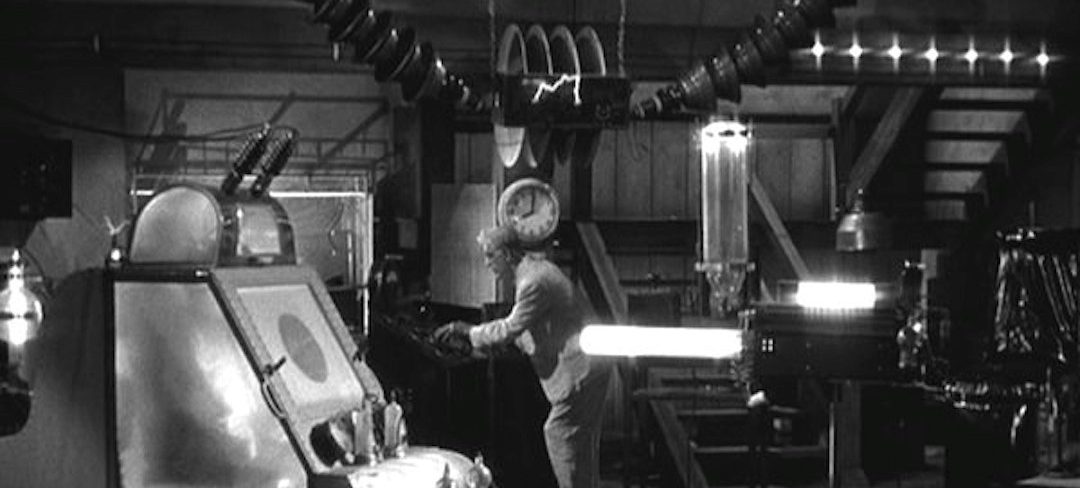It’s that time of year again when the air gets cooler and the nights get longer. It’s the spooky season coming our way, and no getting around it.
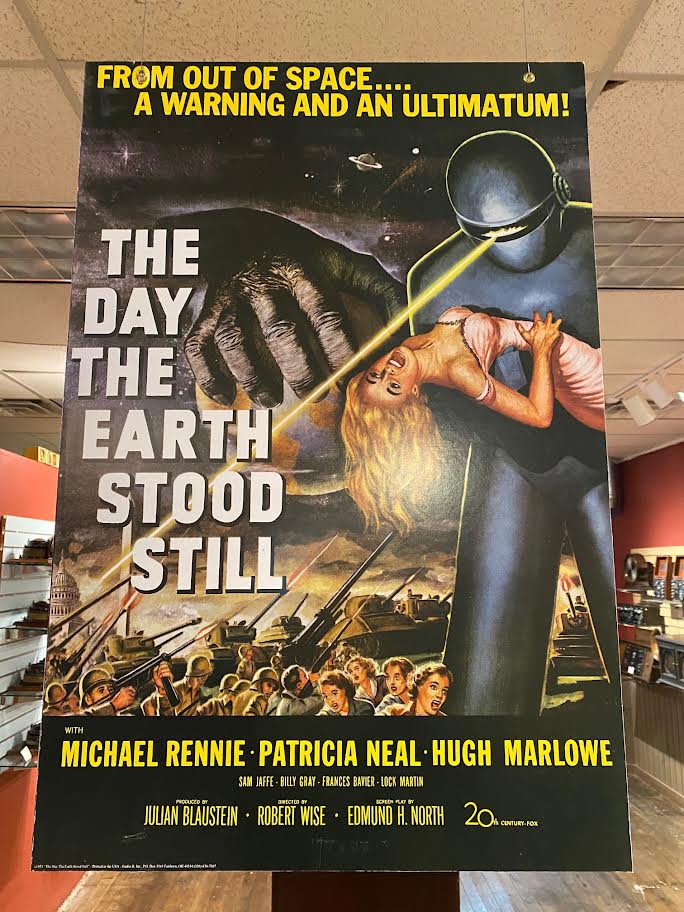
The fact is Halloween would be a lot less spooky if not for some of the fantastic electrical devices on display at the SPARK Museum. Just going through the “A list” of classic Hollywood ‘horror’, ‘science fiction’, and ‘mystery’ genres you will quickly recognize some of the Museum’s favorite devices and best demonstrations.
Take for example, the theremin. It’s hard to imagine seeing a science fiction classic like The Day The Earth Stood Still, or It Came From Outer Space without remembering the haunting, spooky, out-of-this-world sound of the world’s first electronic musical instrument. The theremin is the only musical instrument you play without touching it, and an undisputed staple in movies like The Lost Weekend, and Ed Wood.
The SPARK Museum has an authentic 1929 RCA theremin (they only manufactured 500 of the original) on permanent display, along with a variety of sound samples, and a newer version made by Moog Inc. for visitors like you to try your hand at.
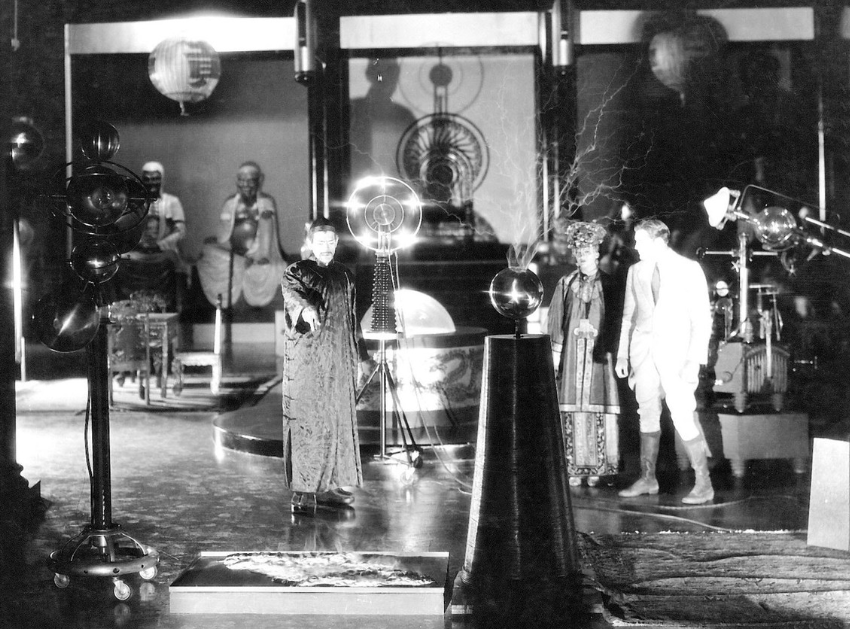
Another Hollywood special effects favorite featured in the Museum’s collection is the Tesla coil. The Museum has 7 (maybe 8) Telsa coils including the MegaZapper, one of the largest in the country. Named after the inventor, Nickola Tesla (1856-1943), this high frequency AC generator creates bolts of lightning on command, and featured in movie favorites ranging from The Wizard of Oz (1939) to Poltergeist (1982).
If you’re looking for even more spooky science at SPARK, we suggest visiting the Museum’s terrific collection of “quack” medical devices, that essentially tortured patients by applying jolts of electricity to their various body parts (think about it). Items like electric medical belts, wired headgear, static bushes, probes and wands are all on display and guaranteed to make you feel much better once the treatment has finally stopped.
This list would not be complete without one of our all-time favorite electrical special effects devices, the Jacob’s ladder. This simple yet visually captivating contraption is prominently featured in many of our favorite horror/sci-fi flicks, including all of the best Frankenstein movies, starting with the original Frankenstein (1931). This hypnotic device became standard issue for any self-respecting mad scientist laboratory.
“And Jacob dreamed, and behold a ladder set up on the earth, and the top of it reached to heaven; and behold the angels of God ascending and descending on it.” Genesis Chapter 28, verse12
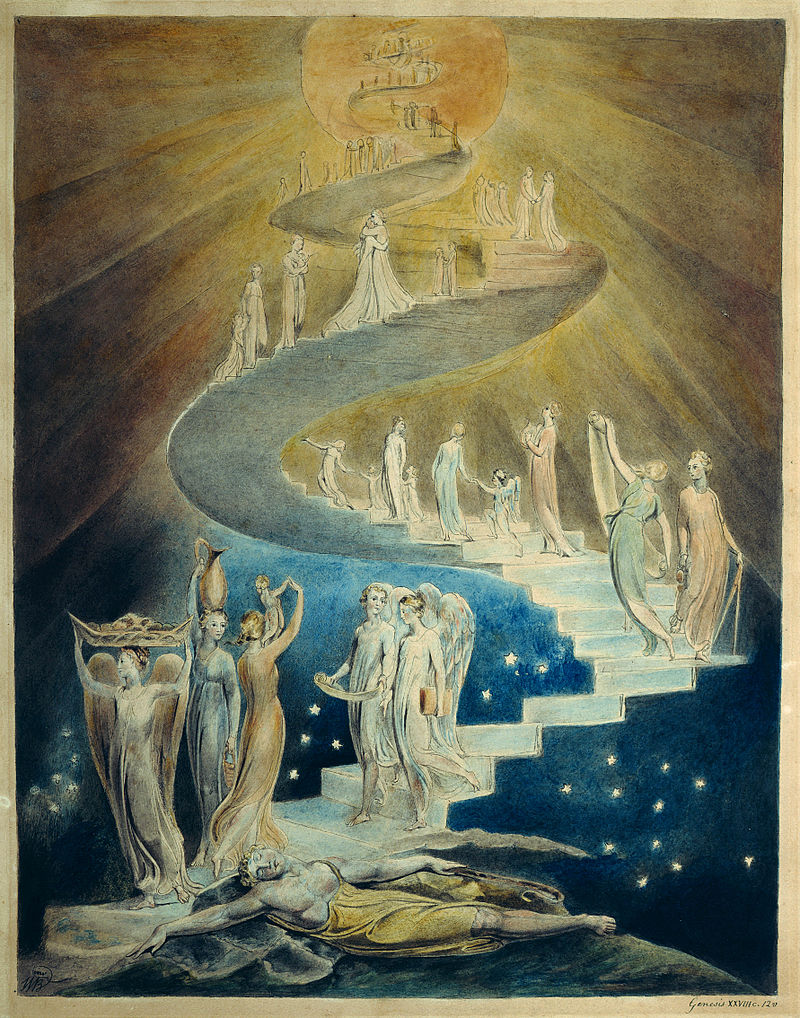
Coined after the heavenly ladder dreamt-up by the writers of Genesis, this is a somewhat familiar piece of physics equipment, used most effectively by Hollywood’s greatest electrical special effects artist: Kenneth Strickfaden.
Kenneth Strickfaden(1896–1984) was a pioneering electronics wizard responsible for creating some of the most dazzling and bewildering visual effects ever put on film. He often used discarded electrical parts, but you’d never know it to see the end result. His electrical apparatus looked spectacular, futuristic, almost immortal.
Strickfaden would go on to create the special effects for dozens of memorable shockers, including The Invisible Man (1933), Flash Gordon (1936), The Boogyman Will Get You (1943) and The Munster’s (1966). But his greatest achievement would be in creating the flash and spark that jolted life into the greatest gothic novel ever written.
“I saw—with shut eyes, but acute mental vision—I saw the pale student of unhallowed arts kneeling beside the thing he had put together. I saw the hideous phantasm of a man stretched out, and then, on the working of some powerful engine, show signs of life and stir with an uneasy, half-vital motion. Frightful must it be, for supremely frightful would be the effect of any human endeavor to mock the stupendous mechanism of the Creator of the world.” Frankenstein; or, The Modern Prometheus by Mary Shelley (1818).
When Universal Pictures asked James Whale to bring Mary Shelley’s gothic literature classic, Frankenstein, to the big screen, he knew it would be a visual challenge. He hired Strickfaden, and told him to pull-out-all-the-stops, ultimately achieving the bright punch that made Frankenstein a visual feast, and timeless masterpiece.
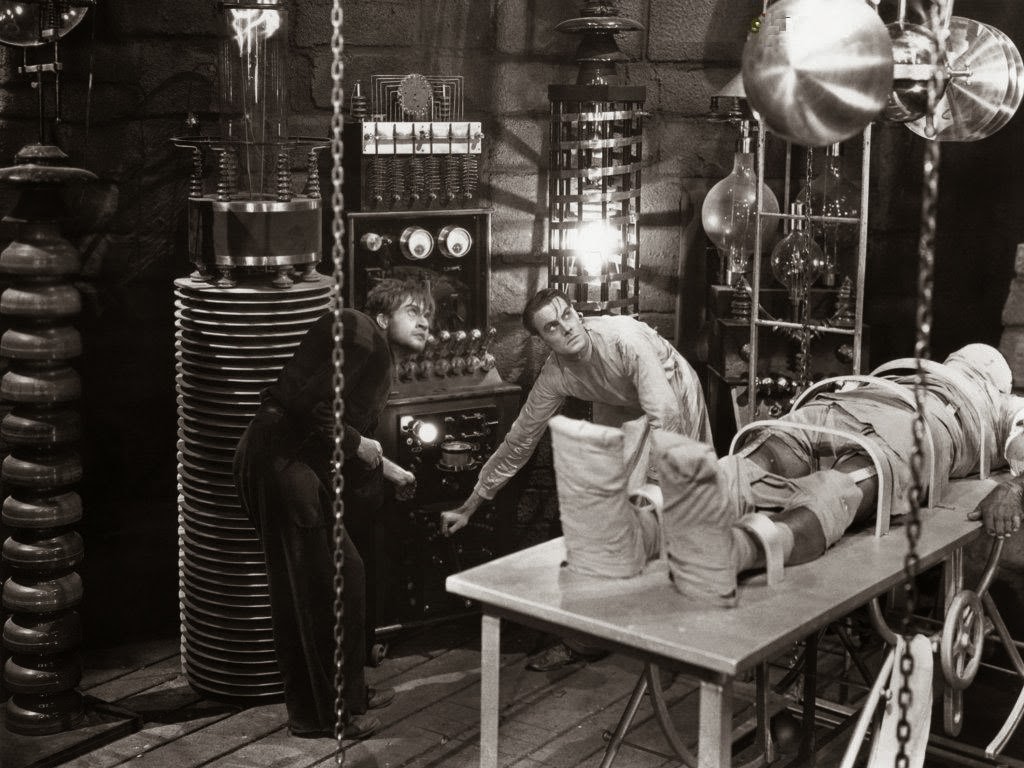
Talk about a visual feast, get a load of that laboratory, and creating the monster during a violent lightning storm! The Frankenstein set is filled with a variety of apparatus Strickfaden invented and constructed just for the movie, many of which he gave intriguing names like a Megavolt Senior, a Neutron Analyzer, a Cosmic Ray Diffuser, and a Baritron Generator, all capable of dazzling visual effects. Strickfaden’s wild contraptions succeeded in breathing life into a great story.
So which of these crazy devices in Frankenstein’s laboratory is a Jacob’s ladder? There’s a lot going on, but here’s a clue: A Jacob’s ladder consists of two wires—rabbit ears—with an arc of electricity slowly rising-up between them, reaching the top until the spark audibly and visually fizzles into the air.
See them? They’re everywhere throughout Frankenstein’s laboratory, especially in the “It’s alive,” scene. Two Jacob’s ladders are prominently displayed just the other side of the camera from Frankenstein’s body, and there is another ladder on the platform upon which the monster is raised.
Spectacular? Yes. Sinister? No. Dangerous? You bet.
So what exactly is a Jacob’s ladder?
A Jacob’s ladder is more accurately known as a high-voltage travelling arc. An electric spark jumps between two parallel metal wires, and the spark then climbs-up the ladder.
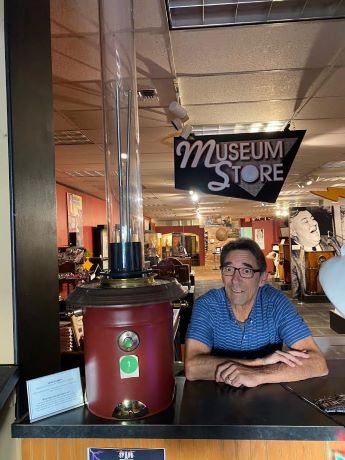
At the bottom is a transformer that changes the voltage, creating a potential difference between the wires. The electrons are fed into the wires, and try and get as far apart as possible. The spark heats up the surrounding air causing it to rise along with the spark. (The spark is so hot it’s classified as plasma, the 4 th state of matter.) When the spark gets to the top of the wires, it dies and a new one starts at the bottom. (If the antenna were straight up and down the spark would stay at the bottom, bouncing off each other in a standoff. Because the antenna is just slightly widening, the spark has to jump to connect to the other side.)
The Museum’s Jacob’s ladder is the first device you’ll see when entering the main lobby, and was designed and built by one of our longest, most devoted volunteers, Bill Englander.
“I probably saw my first Jacobs ladder as a kid watching the original Frankenstein movie on TV,” says Bill. “All my life I wanted to build one; it was just too cool for school.” In the summer of 2010 Bill began designing and building what many feel he was born to create.
“The current ladder—pun intended—was created for SPARK with the generous assistance of The ReStore, who supplied among other things the futuristic-looking cap on the cylinder and all the brass bling on the base,” says Bill. “Most everything else was scrounged from my electrical box-o- goodies and the Museum’s Repair Shop and gigantic basement.”
Bill’s marvelous creation is on permanent display and the first item highlighted in the Museum’s Visitor Guide. We encourage everyone to visit soon and witness this classic demonstration of electrical phenomena.
Until next time stay safe, stay grounded.
